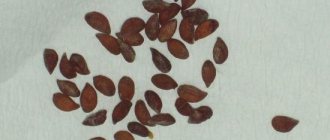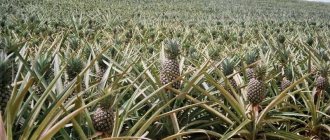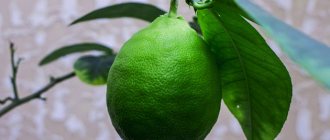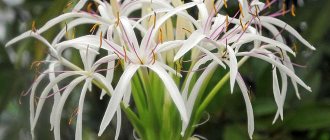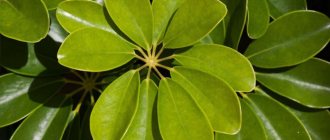In Latin America, where pineapples grow wild, there are eight species of this perennial herb. Only one of them, the large-tufted pineapple (Ananas comosus), has been adapted for growing at home. Its varieties will not be particularly diverse, although they differ from each other in foliage color: from light green to whitish with a border or stripes that gradually acquire a pink tint.
Home care
If you give a pineapple everything it loves - a lot of warmth and light - it will delight its owners with rapid growth, flowering and even fruiting. You can buy the plant at a flower shop or try to grow it yourself. In any case, your task is to provide the South American guest with appropriate conditions of detention.
Location and lighting
It is advisable to place a pot of pineapple on a south window. Let him enjoy the sunshine without restrictions. Unless on some too hot days you will have to shade it slightly. As a last resort, place the flowerpot on the southwest windowsill.
If you place it in another place, you will have to illuminate it with a phytolamp for up to 12 hours of daylight. The evergreen beauty will not be able to develop on artificial lighting alone. Still, he will need natural light, so as soon as you notice that your pet’s leaves have begun to turn pale, combine natural and artificial lighting. And don’t forget to rotate the tub from time to time so that the outlet receives light evenly.
Temperature
This heat-loving representative of the Bromeliad family will not forgive you for temperatures dropping below 16 degrees in winter. There is no need to specially take the pot out into the cool place. Pineapple will tolerate +20-22°C just fine. And in the summer, the warmer it is, the better. The ideal temperature is +25°C. But the plant will calmly survive the increase in degrees.
On particularly hot days, you can take the tub out onto the balcony or into the yard. Just choose a cozy place where the draft will not reach. And indoors, make sure that the cold wind from the window does not blow towards the leaves.
Watering
In winter, water the pineapple not very often, as the soil dries out. But when the bush is in a state of flowering or fruiting, moisture saturation should be increased. Soft and warm (30-35 degrees) water can be poured directly into the outlet.
Do not allow water to stagnate in the pot, otherwise the root system may rot, but the soil should be constantly moist. When September comes, gradually wean your green friend from frequent watering, preparing for the dormant season.
Air humidity
There should be a humid microclimate around the pineapple. During the warm season, constantly practice spraying the leaves. In winter this is not necessary. Unless the humidity in the room is too low. The pet tolerates showers well.
The soil
Select acidic and loose soil for pineapple. To get the optimal substrate, mix:
- 25% humus;
- 30% turf;
- 15% coarse sand;
- 30% crushed peat.
In such proportions the soil will be permeable.
Feeding and fertilizers
In the autumn-winter period, the green ward does not need feeding, as it is in a state of rest. And from spring to autumn you will have to feed it twice a month.
You can use complex fertilizers or alternate mineral fertilizing with organic fertilizing. It is recommended to use mullein from organic matter. Fill a liter jar one-third full with fertilizer, top up with water. Stir regularly, and after 10 days the solution is ready. Dilute it in a bucket of water and you can feed the pineapple.
When the plant loses color, use mineral complexes. When fruits appear, practice watering with sweet water (2 tablespoons of sugar per 20 ml of water).
Do not use ash or fertilizers with lime under any circumstances.
Transfer
After bringing a pineapple sprout from the store, immediately begin replanting. To start, take a 3-liter pot. It should be wide enough and not too deep, since the roots are located close to the surface.
Line the bottom of the flowerpot with drainage, sprinkle with soil mixture or purchased soil for citrus fruits. Move the plant along with the earthen lump into a new container and add as much earth as needed. If you do everything correctly, the pineapple will respond with the appearance of young shoots.
Make the second transplant six months later, and the third one a year after the growing season. Next, watch the roots. As soon as they feel crowded, move the bush into a tub with a wider diameter. It is best to carry out the procedure in March. Each time during transplantation, deepen the root by 1-2 cm.
Wear protective gloves as the pineapple has quite sharp spines.
Trimming
The bush does not need any special pruning. Only dry or damaged leaves should be removed. At the same time, grab part of the healthy leaf adjacent to the sore spot. Disinfect the knife for work.
Where does pineapple come from?
Pineapple is a perennial herbaceous plant, an epiphyte, with compacted, fleshy leaves collected in one strong, thick knot called a basal rosette. This rosette forms a massive stem with a peduncle at the top. The peduncle is usually formed high, up to 50 cm, with a spike-shaped inflorescence and a rosette with a bract.
Pineapple has a very exotic look and looks great in a pot.
Pineapple comes from Brazil, although this plant is cultivated in many countries with similar climates.
In countries with tropical climates, pineapple is grown on an industrial scale
It appeared in Russia under Catherine II and was grown in public greenhouses.
In the wild, the pineapple is accustomed to bright sun, a humid atmosphere and light soil; approximately the same conditions will have to be created on your windowsill for favorable maintenance of this crop as a houseplant.
Varieties
- The pineapple variety "Caenna" is perfect for keeping at home. The most ancient type of pineapple, popular in the tropics, loved by many for its wonderful taste. The weight of a mature fruit can be about 600 grams.
- The pineapple variety " Champacca" is often grown as an ornamental plant. Champaka looks truly picturesque, like most bromeliads: sharp saw-toothed leaves springing elastically from a single rosette and ripe golden fruits with conical inflorescences of pink shades.
- Decorative pineapples (Ananas Nanas) are very popular among gardening and landscape design lovers because they have a colorful appearance and look very colorful among other plants. Decorative varieties of pineapples stand out not only for their bright bracts, but also for their variegated foliage and red shades.
- The Mauritius pineapple variety tolerates transportation well and is therefore often grown commercially. In addition, Mauritius has good taste and is also quite suitable for home cultivation.
- Pineapple variety MD-2 is a pineapple hybrid developed by a Hawaiian research institute through a crop breeding program. It is an international standard of quality among market products. The resulting hybrid took root and spread throughout the world. The fruits of MD-2 are very sweet, bright golden in color with a low degree of acidity. The variety is resistant to parasites and internal putrefactive processes.
Photo gallery: pineapple also comes in different varieties
Video: growing pineapples in captivity
Table: seasonal maintenance of the plant
Flowering and fruiting
Usually 2-4 years after the rosette is formed, the pineapple produces a peduncle. If this does not happen, the plant can be “helped” to bloom. This is done in different ways:
- Feed with liquid organic matter throughout the growing season at intervals of 14 days;
- for 5-7 days, pour into the outlet a solution of 15 g of carbide diluted in 1 liter of water;
- cover the pineapple with a bag and place a piece of smoking carbide next to the flowerpot;
- Place overripe apples nearby on the windowsill and do not remove them for several days;
- fumigate with cigarette smoke once a week for 21 days.
After such procedures, in about 2-3 months an inflorescence should appear, and after a month the ovary should appear. After six months, you will be able to enjoy the ripe fruit.
Pineapple blooms with blue flowers. The process will take two weeks, accompanied by a pleasant aroma. Each of the flowers fades as the day passes. After the last one has faded, the fruit begins to form.
The ripening of the fruit marks the death of the plant. This doesn't happen right away. The pineapple still has time to produce young shoots that can be used for replanting.
Reproduction
Exotics can be propagated in three ways:
- seeds;
- apical cutting;
- daughter sockets.
All of them are effectively used at home with consistently positive results.
Seeds
You won't get seeds from pineapples bought at the supermarket. Therefore, you will have to buy them at a flower shop. Before planting, keep the seed for a day in a warm place, placing it between two wet wipes. The seeds should swell. Now they can be planted in a peat-sand mixture, planting 1-2 cm deep. Cover the top of the box with glass or stretch the film to create a greenhouse. Place in a warm place. In cool weather, the seeds may not hatch.
The first sprouts will have to wait from 3-4 weeks to 1.5 months. If the air temperature is above 30 degrees, germination will begin in the second or third week.
Moisten the soil all the time. Once every 15 days, feed the seedlings with complex fertilizers.
When rosettes with 4-5 leaves are formed, plant them together with a lump of earth in a regular soil mixture, adding a little crushed charcoal. Then grow them as mature plants.
Top
To do this, you need to buy ripe fruit in the store. Choose ones with firm green leaves. If they wilt or become lighter in color, the pineapple will not germinate. It is also impossible to get a new plant from frozen fruit, which is usually sold in winter.
Unripe fruit can be identified by tearing out one leaf. If this is difficult to do, it means it is not yet ripe.
Make sure the crust is an even golden brown color. Do not take green or stained ones.
When you get home, cut out the top (sultan) with a small amount of pulp. You can simply scroll the tops, disconnecting them from the base. Cut the lower leaves so that the stem is exposed by 2-3 cm. Treat the cut areas with a solution of potassium permanganate. Let the seedling dry for 2-3 days, keeping it hanging upside down. You can store it for up to a week, but no more.
Then plant it in wet sand, covering it with a cap cut from a plastic bottle. Keep the sprout in a warm place and moisten regularly. The roots should appear in about 3-4 weeks.
The second method of germination is in a glass of water. Just make sure that the leaves do not touch its level. Change the water from time to time.
When the roots reach 5-6 cm, they can be transplanted into the soil. The pot must be at least 15 cm in height. Cover the stem with roots with soil and leave the leaves outside. Keep the soil moist. The room should have enough light and warmth.
First, young leaves will appear in the rosette, and the old ones will gradually dry out and will have to be cut off. From now on, try to always have water in the formed funnel.
After about six months, a red cone should appear in the center, from which blue petals will subsequently form, and then a fruit will form.
Basal rosettes
During transplantation, separate the formed children from the roots. They can be broken off or cut from a mature plant. It is desirable that these basal rosettes gain 15 cm in height and have a formed rosette with several leaves. Sprinkle the cut area with crushed coal. Place the children in a container with a sand-peat mixture, covering it with film.
How to plant pineapple correctly
Surely every second person who has ever bought a pineapple at the market has thought about whether it is possible to grow this crop at home. This is possible despite the fact that pineapple is used to growing in tropical climates. But, before you start growing this crop, you need to select the desired fruit and root it according to all the rules in an acceptable container and soil.
Fruit selection
The fruit that is purchased for rooting the top should be moderately ripe with a beautiful and intact tuft. You should buy pineapples for planting in season - in summer or early autumn, since in winter the fruits are stored in refrigerators and the rosette may already be frozen and lifeless by the time of purchase.
The pineapple fruit or tuft should have dense green foliage, be firm to the touch, and healthy in appearance.
When choosing a pineapple fruit for planting, focus on the condition of the tops
If the leaves begin to turn yellow and dry, then it is better not to take this fruit for planting.
The center of the pineapple pulp should be yellow in color and not very hardened. The fruit of a proper pineapple usually exudes a pleasant aroma and has no dents or signs of disease.
Top separation
In order to separate the top of the pineapple from the fruit, you need to grab the fruit with one hand, and the pineapple tops with the other and turn the top towards yourself, as if twisting it out of the pineapple. The stem will gently come out of the pulp.
If difficulties arise with twisting, then the separation procedure can be done using a knife, cutting out the leaves from the fruit with a root.
You can separate the pineapple tuft from the fruit by twisting it
You will have to cut at an angle of about 45 degrees, and then, to avoid rot, remove the pulp from the tufted stem and the lower leaves, exposing the trunk.
Diseases and pests
Pests usually avoid pineapple. But sometimes attacks from mealybugs or mites occur. In these cases, use special chemicals on the leaves and rinse them with water.
If a fungus grows inside the rosette, the leaves will turn black and begin to fall off. Apply the fungicide solution by pouring it directly into the core. When the cured plant produces a new leaf, the old and affected ones can be cut off.
Care errors
In addition to pests, pineapple can wither due to improper care. Therefore, take appropriate measures in time:
- If the tips of the leaves dry out, increase the humidity in the room.
- Mold has appeared on the soil - remove it with a napkin and significantly increase the intervals between waterings.
- Light spots on the leaves - treat the leaves with a weak solution of potassium permanganate.
- If the roots are rotten, cut off the bottom of the trunk, leaving only healthy tissue, and re-root the top. In the future, do not keep the pineapple pot in too cool conditions.
- Slow growth - move the flowerpot to a warmer place and water with slightly warmed water.
Homemade Pineapple. Growing problems:
- Slow growth and lack of flowering indicate a lack of nutrition.
- The lower leaves dry out and curl when constantly exposed to drafts.
- Pale leaves with insufficient lighting.
- Leaves dry out at high air temperatures or the plant lacks moisture.
- Rot at the base of the pineapple indicates waterlogging of the soil or low temperature. It is necessary to dry the soil and increase the temperature, otherwise the rot will spread higher and the plant will die.
Views: 1,559

